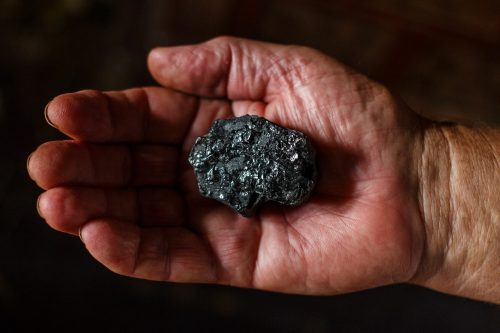A new report concludes that United States President Trump’s efforts to revive the U.S. coal industry are unlikely to succeed. It urges policymakers to accept that American coal is in decline and to stop raising false hopes of a return to the glory days. It suggests that they focus instead on securing the pension and health safeguards of miners and their families, and helping coal communities “build a new economic future.”
When he signed an Executive Order on 28 March 2017 to roll back a stack of environmental measures brought in under his predecessor, Trump told coal miners that this meant they would be “going back to work.”
 The researchers suggest that nearly half of the decline in coal is due to increased competition from natural gas. Image: pixabay-1521718
The researchers suggest that nearly half of the decline in coal is due to increased competition from natural gas. Image: pixabay-1521718
However, a new report from Columbia University in New York says Trump’s action is unlikely to resurrect the glory days of American coal.
The Columbia researchers analysed the decline in the U.S. coal industry between 2011 and 2016, during which production fell by a third, and employment even further.
Obama regulations account for only 3.5 percent of coal decline
They argue that the regulations brought in under Obama account for just 3.5 percent of the decline in domestic U.S. coal consumption, and other factors – not addressed by Trump’s efforts – had a much bigger impact.
The researchers attribute nearly half (49 percent) of the decline in coal to increased competition from natural gas, with reduced demand for electricity accounting for 26 percent, and growth in renewable energy accounting for 18 percent. They note:
“Environmental regulations have played a role in the switch from coal to natural gas and renewables in U.S. electricity supply by accelerating coal plant retirements, but were a significantly smaller factor than recent natural gas and renewable energy cost reductions.”
Global factors have had bigger impact than many realized
The Columbia team also points out that many have underestimated the size of the blow the U.S. coal industry suffered as a result of changes in the global market.
They say that more than half of the drop in revenues during 2011-2015 to U.S. coal companies was due to “international factors.” Not least among these was the slow-down in China’s demand for coal, which reduced global prices and consequently shrank the market for U.S. exports.
Even though global markets appear to have rallied slightly in recent months – mainly as a result of restricted supply in China and floods in Australia – the team says the situation is unlikely to last.
Best-case scenario is only a “modest recovery”
The report suggests that the only way that rolling back the Obama-era regulations could slow the recent decline would be if natural gas prices were to rise and keep rising. If these stay at current levels, or the costs of renewables tumble faster than expected, then demand for coal in the U.S. will continue to fall, regardless of the aggressive reversal of the Obama-era measures.
Summing up, the Columbia researchers note that even in the best-case scenario, their models foresee only a “modest recovery” to the levels of 2013, when output totalled around 1 billion tons a year.
And, in terms of employment, they do not foresee levels rising above 94,000 between now and 2030, which is lower than they have been in any year prior to 2015.
Given that the U.S. coal industry was employing 130,000 in 2011, it is hard to see, from the Columbia analysis, how the new U.S. president’s efforts are going to increase employment for miners – at least not in the coal industry.

